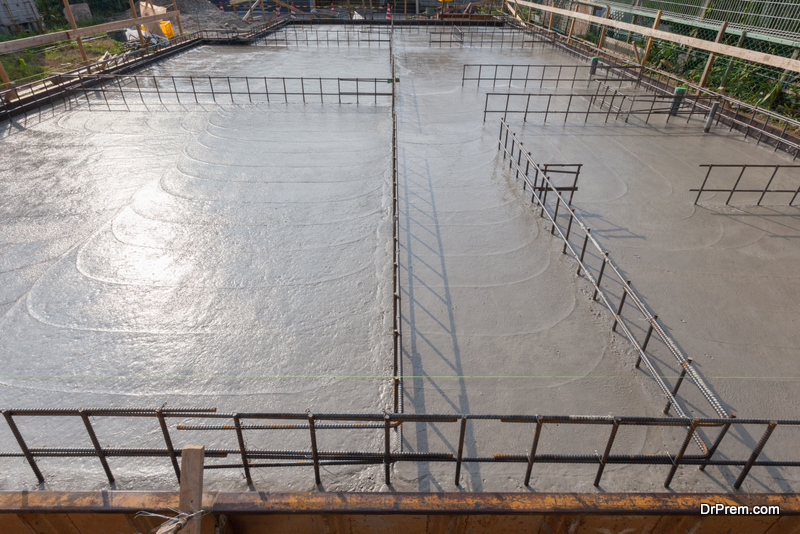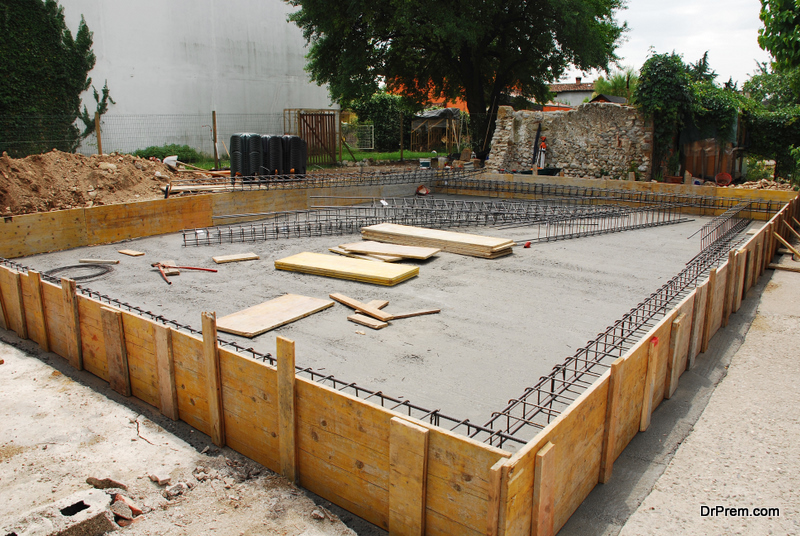Concrete is inarguably one of the most important construction materials in existence. Over 370 million cubic yards of it are used each year in the United States alone, according to the New York Times. Its historical use dates as far back as early 500 B.C., and today the world churns out roughly 10 billion tons of concrete each year.
Concrete is prized in the world of construction for its immense strength, versatility, and longevity. Some records show that this popular manmade material can last more than a millennium. But the real concrete magic happens during curing, which refers to a critical process that takes place right after pouring and finishing.
Curing concrete plays a critical role in ensuring the finished project’s durability, strength, and integrity. The process usually involves maintaining the right temperature and moisture conditions over an extended period.
Well-cured concrete has just the right amount of moisture and thermal energy so that it can stay hydrated for a long time and ensure optimal development of stability, strength, and proper resistance to thawing & freezing. Proper curing is also crucial for enhancing concrete resistance to scaling and abrasion, plus optimizing volume stability.
Today, we’re going to take a quick look at how concrete curing works.
What exactly is concrete curing?

You could be forgiven for thinking curing is merely drying concrete. But that couldn’t be further from the truth. What happens during the curing of concrete is actually a complex chemical process in which moisture is incorporated into the particulate structure of the cement, helping retain some water in the bulk material.
Curing includes providing concrete with the necessary time, temperature, and moisture conditions, thus allowing it to attain the desired characteristics. This chemical hydration process enables concrete to develop the required strength, gain volume stability, and harden properly.
How long should concrete curing last?
As we’ve mentioned, an adequately cured concrete must have a sufficient amount of moisture to allow curing to take place for an extended period of time. The hydration reaction may continue to occur years after the concrete is poured and set. Knowing just when the concrete curing process is finished can be tricky.
How long it takes for concrete to be adequately cured depends on multiple vital factors that include:
- Conditions to which the concrete will ultimately be exposed
- Prevailing weather conditions
- Desired concrete strength
- Shape and size of the concrete structure
- Proportion of ingredients in the concrete mixture
The American Concrete Institute (ACI) generally recommends that curing measures remain in place until at least 70 percent of the desired compressive strength is achieved. As a rule of thumb, most concrete projects, including structural concrete (e.g., retaining walls, bridge decks, etc.) and ground concrete slabs (e.g., driveways, floors, pavements, etc.), need a minimum curing time of 7 days and ambient temperatures should be kept consistently above 40 °F.
Of course, the actual curing period will be dependent on the ambient temperatures, type of cement used, the size of the concrete, and the shape of the concrete member. The 7-day curing time recommended by the ACI to reach the 70 percent compressive strength level is tied to a 40°F minimum temperature requirement.
If the concrete is cured at temperatures far higher than 40°F, desired strength of 70 percent will be reached earlier than seven days. Likewise, certain concrete mixtures may require a longer or shorter curing time.
The American Concrete Institute recommends a minimum of seven days for concrete comprising ASTM C 150 Type I cement. Similarly, the ACI recommends curing ASTM C 150 Type II, Type III, and Type IV/V cement for a minimum of 10, 3, and 14 days respectively.
How Concrete Curing Works
 There are three primary approaches to optimizing the concrete curing process.
There are three primary approaches to optimizing the concrete curing process.
1. Adding water to the concrete surface in the early phase of curing
The approach’s overarching principle lies behind maximizing the retention of mixing water during the initial hardening phase. You can achieve this using several different methods:
Fogging and spraying: Most construction companies use fogging and spraying when the humidity is on the lower side, and ambient temperatures are well beyond freezing. Fogging the concrete helps reduce cracking due to shrinkage until it finally sets.
Ponding: Curing flat concrete slabs and surfaces on small-scale jobs usually requires ponding. The temperature difference between the concrete and curing water should not exceed 20 °F, lest the structure cracks due to heat stress. Immersion is an alternative method to ‘ponding’ when it comes to curing test concrete specimens in the laboratory.
Place forms and saturated wet coverings: Moisture can also be added or retained in concrete using saturating wood forms. Wrapping already set concrete in damp cloths or covers can also help curb moisture loss from the surfaces. You should leave the place forms in place for as long as the construction timeline permits. The same goes for saturated wet coverings.
2. Minimizing moisture loss from the surface of the concrete
Reducing the loss of water from the surface is probably the most effective way to cure concrete. Contractors employ at least two common methods to seal in moisture:
Application of sealant on the surface: When you apply a membrane-forming compound to the concrete surface, it helps contain moisture as long as it is needed for curing. The moisture retardant can be white pigmented (best for hot, sunny conditions) or translucent for general purpose curing. The curing sealant must comply with ASTM C13155 and should be applied to the surface of the concrete soon after finishing.
Using coverings as solid barriers: Most companies use non-porous plastic or paper sheets to keep in moisture. But the surface should be thoroughly wet before applying the covering.
3. Adding heat to accelerate the curing process
The third and most modern option is accelerating the hardening and strength development by adding heat and more moisture to the concrete. Additional heat can be supplied using a variety of equipment.
Heating coils: In most cases, heating coils are embedded near the surface of the concrete to help protect it from freezing when temperatures dip during the curing process.
Concrete blankets: If the concrete elements are subjected to freezing conditions, concrete blankets can be used to insulate them during the curing period. Of course, these blankets should be applied when the concrete has become adequately hard.
Heat pads/forms: Electrical concrete place forms or pads can also provide covering and insulation for precast concrete structures.
Live steam: Live steam at atmospheric pressure should be maintained at around 140°F to facilitate optimal steam concrete curing. Some contractors prefer high-pressure steam curing because it doesn’t require high ambient temperatures to work.
How data loggers can help with concrete curing
Data loggers have become almost synonymous with highly regulated industries like biopharmaceutical, food, and healthcare. The thermal sensors serve as environmental condition monitors throughout the cold chain, allowing for the safe storage and delivery of sensitive items such as Covid-19 vaccines. It turns out these devices can also play a crucial role in the concrete curing process.
How so?
Due to the nature of concrete, curing can be affected by several variables, most often weather elements and ambient temperatures. Because of that, good curing practices call for monitoring of these conditions so that any discrepancies can be detected and corrected early.
That’s precisely where industrial data loggers come into play. With modern digital data loggers (DDLs), moisture levels and ambient temperatures can be automatically measured, monitored, and documented. And, according to Dickson, data loggers can help organizations dealing with concrete to reduce the chances of human error, minimize operational costs, and protect their assets.
Best of all, DDLs can be designed to automatically transfer monitoring data collected from concrete to a centralized place from which it can be accessed and analyzed remotely. More than that, data loggers can be configured to send customized alerts via text, phone call, or email when conditions fall out of range.
Conclusion
Curing plays a critical role in making sure concrete achieves required strength and durability levels. However, the process is affected by moisture levels and ambient temperature deep in the concrete material and near the surface. Using data loggers can help ensure efficient monitoring of these conditions and timely detection of deviations.
Article Submitted By Community Writer




